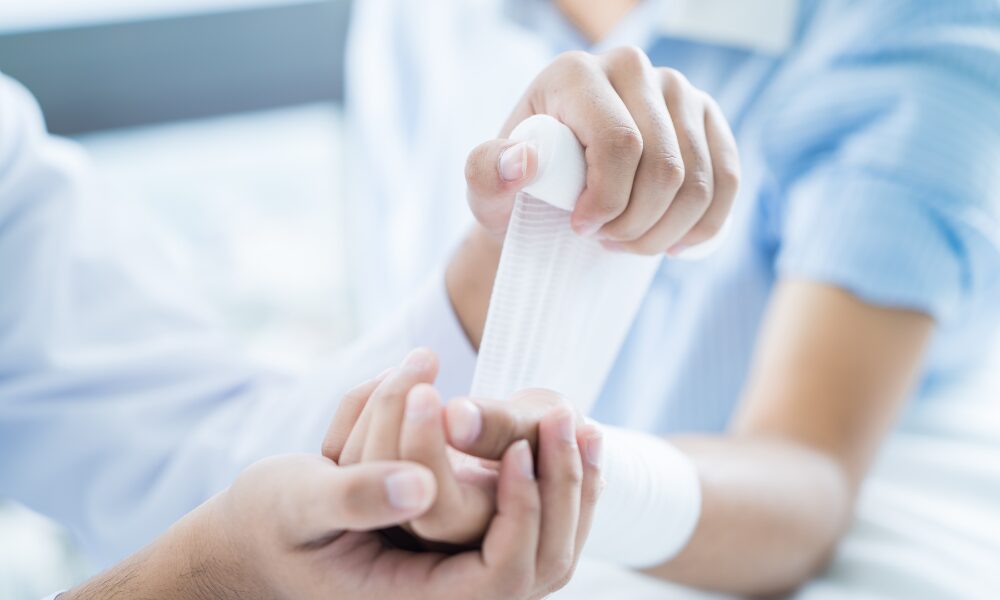Understanding Pressure Wounds and Tunneling

The human body is a complex organism, both in how it operates and what can hurt it. Even innocuous activities can sometimes lead to bad outcomes, examples of such being pressure wounds and tunneling. Both of these issues can cause serious damage to individuals, often requiring special attention and care to heal from. Learn more about this topic so you can understand pressure wounds and tunneling, as well as what to do about each.
What Are Pressure Wounds?
Pressure wounds, also called pressure ulcers, are a kind of injury caused by prolonged pressure on the skin. This pressure interrupts blood flow to the tissue in that area of the body, causing damage and eventually necrosis. They’re most prevalent among those with a sedentary lifestyle or those who are bedbound, but any area of the body can potentially be affected.
Common areas of the body for pressure ulcers to develop are places where skin and other tissue sit over bones. Parts of the back, like the sacrum, are one example, where lying down presses tissue into the rough bones. Heels are another common area, especially for those who live a more active lifestyle.
Understanding Tunneling
Tunneling is a type of wound that occurs when another wound does not heal properly. Pressure ulcers are a major culprit of tunneling, the tissue below the ulcer being separated or destroyed, leading to a hole or tunnel beneath the skin. Tunneling stunts healing and can make way for worse injury or infection if left untreated, potentially being worse than the wound that caused it to form in the first place.
It’s important to identify tunneling as soon as possible to avoid things from getting worse. Per the name, tunneling can easily spread, creating a larger network of holes and tunnels in someone’s body. This leads to a host of problems, including an inability to heal from injuries, weakness, and infection.
Stages of Pressure Ulcers
Pressure ulcers are categorized into four stages, described as:
Stage 1: Non-Blanchable Erythema
The skin appears red, discolored, or otherwise bruise-like. The wound is typically warm to the touch and may feel hard.
Stage 2: Partial-Thickness Skin Loss
The epidermis (outer layer) becomes damaged, with potential damage to the dermis (layer beneath it). The wound will look red and take on a moist appearance, possibly resembling a blister.
Stage 3: Full-Thickness Skin Loss
The wound has worsened to the subcutaneous fat layer below the skin. This fat may be visible at this stage, but nothing deeper.
Stage 4: Full-Thickness Tissue Loss
The ulcer is severe enough to burrow through the fat layer, exposing the bone, tendon, or muscle beneath. Slough or dead tissue (eschar) is likely present, and the wound may have progressed to tunneling.
Treatment for Pressure Wounds and Tunneling
There are several treatments for pressure wounds depending on how severe things have become. For stage 1 ulcers, removing pressure is often the best course of action. Keeping weight off the affected area is a good start, typically paired with pain medication and potentially an antibiotic to aid in healing.
More severe wounds at advanced stages will likely require dressing the wound. This is because the ulcer has developed to the point of an open wound. Deeper ulcers may require packing, with care taken not to pack too tightly and cause further pressure damage. Negative pressure wound therapy (using a vacuum to remove air pressure within the ulcer) can be beneficial, as well. Periodic draining of tunnels may be required, and surgery may be required to repair severe injuries.
Prevention Strategies
The best medicine is prevention, and there are several things you can do to prevent pressure wounds before they happen. Repositioning a limb or part of the body that experiences pressure often can help. Proper skin care and eating well also help by improving healing and your overall health.
Certain people, such as disabled and elderly patients, are often at a higher risk of skin ulcers. Monitoring their condition and checking on areas of the body most susceptible to these wounds can catch them when they’re early, as can listening to them when they complain of pain or discomfort.
When to Seek Medical Attention
If you suspect you or a loved one may be developing a pressure wound, act fast and seek medical care. Pay attention to the stages of ulcers as outlined earlier, particularly if you live a sedentary lifestyle. If a section of the body feels hollow or depresses without springing back, there may be tunneling present. If old bruises or other wounds take longer to heal than you would expect, it may be worth it to schedule an appointment.
Don’t wait; early intervention can prevent serious complications. Contact us at United Wound Care Centers of Rockwall today to schedule a comprehensive wound evaluation and begin personalized treatment.
Image Credit: Portrait Image Asia // Shutterstock

